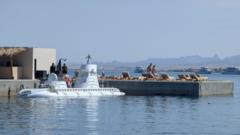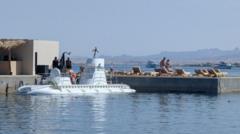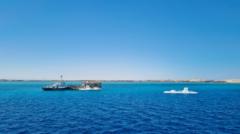Recent revelations from a group chat involving Trump administration officials have shed light on the U.S. strategy for ongoing airstrikes against the Houthi militia in Yemen. The disclosed discussions, which emerged after a misdirected inclusion of The Atlantic’s editor-in-chief, highlighted intentions to deter attacks on commercial vessels in the Red Sea and restore vital shipping routes crucial to global trade.
U.S. Airstrikes in Yemen: Challenges Ahead for Trump Administration’s Strategy

U.S. Airstrikes in Yemen: Challenges Ahead for Trump Administration’s Strategy
U.S. efforts to combat Houthi attacks in Yemen face significant obstacles, as experts weigh in on the complexities of air power versus ground operations.
However, experts caution that simply relying on air strikes may be insufficient to defeat the Iran-backed Houthis. Military analysts point out that historical precedents show that air power alone rarely leads to victory in modern conflicts. The strategic objective of reestablishing shipping routes to the Suez Canal faces a complex reality; for shipping companies, the risks associated with the Red Sea route have prompted alternative shipping methods, despite being more costly and inconvenient.
James R. Holmes, a maritime strategy expert, emphasized that the past U.S. military campaigns illustrate the necessity of ground forces. He noted that significant military interventions, including the Gulf War, have always required a combination of air and ground strategies to effectively neutralize enemy forces. As the U.S. continues its military response, the question remains whether the administration can adapt its approach to ensure the success of its mission against the Houthis, or if an expanded military presence will be required for substantial change on the ground.
In summary, while the intention to curb Houthi activities is clear, the path forward for U.S. military operations in Yemen appears to be fraught with challenges that may demand a more comprehensive strategy.
James R. Holmes, a maritime strategy expert, emphasized that the past U.S. military campaigns illustrate the necessity of ground forces. He noted that significant military interventions, including the Gulf War, have always required a combination of air and ground strategies to effectively neutralize enemy forces. As the U.S. continues its military response, the question remains whether the administration can adapt its approach to ensure the success of its mission against the Houthis, or if an expanded military presence will be required for substantial change on the ground.
In summary, while the intention to curb Houthi activities is clear, the path forward for U.S. military operations in Yemen appears to be fraught with challenges that may demand a more comprehensive strategy.



















